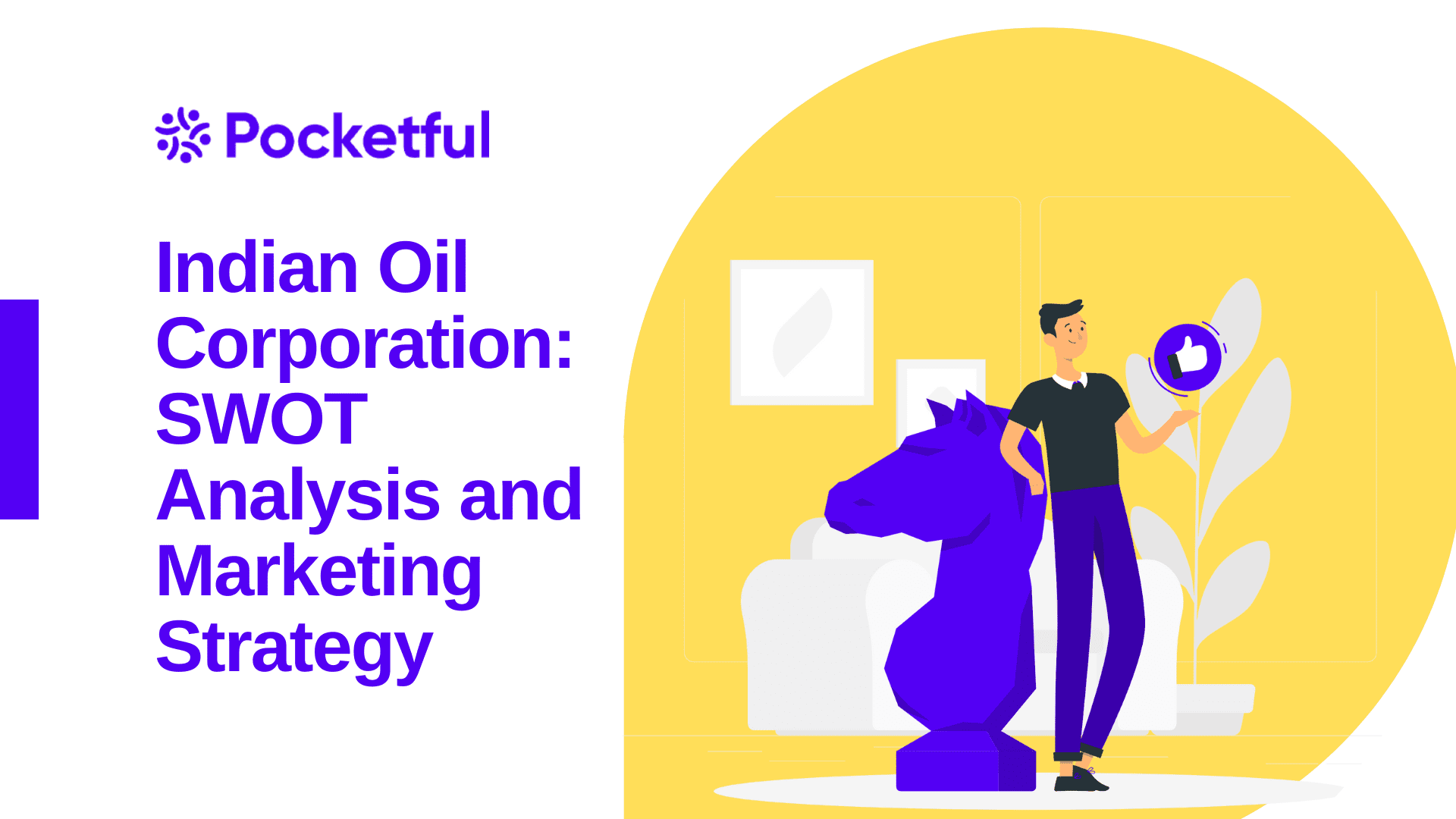| Type | Description | Contributor | Date |
|---|---|---|---|
| Post created | Pocketful Team | Dec-07-23 | |
| Content Update | Nisha | Mar-28-25 |
Read Next
- What Is Quick Commerce? Meaning & How It Works
- Urban Company Case Study: Business Model, Marketing Strategy & SWOT
- Rapido Case Study: Business Model, Marketing Strategy, Financial, and SWOT Analysis
- Trump Tariffs on India: Trade vs Russian Oil
- NTPC vs Power Grid: Business Model, Financials & Future Plans Compared
- Exxaro Tiles Vs Kajaria Tiles
- Adani Power Vs Adani Green – A Comprehensive Analysis
- Blinkit vs Zepto: Which is Better?
- UltraTech Vs Ambuja: Which is Better?
- Tata Technologies Vs TCS: Which is Better?
- Tata vs Reliance: India’s Top Business Giants Compared
- HCL Vs Infosys: Which is Better?
- Wipro Vs Infosys: Which is Better?
- Voltas vs Blue Star: Which is Better?
- SAIL Vs Tata Steel: Which is Better?
- JK Tyre Vs CEAT: Which is Better?
- Lenskart Case Study: History, Marketing Strategies, and SWOT Analysis
- Parle Case Study: Business Model, Marketing Strategy, and SWOT Analysis
- Tata Motors Vs Ashok Leyland: Which is Better?
- Apollo Tyres Ltd. vs Ceat Ltd. – Which is better?
- Blog
- indian oil case study swot analysis and marketing strategy
Indian Oil Case Study: SWOT Analysis and Marketing Strategy


Indian Oil Corporation (IOC) is the largest Indian public-sector oil and gas company, overseen by the Ministry of Petroleum and Natural Gas. It was formed in 1964 through the merger of Indian Oil Company Limited (established in 1959) and Indian Refineries Limited (established in 1958). The company has subsidiaries in Mauritius, Sri Lanka, and the Middle East.
The company was established with the objective of refining and marketing petroleum products in India, but over the years it has expanded its business operations, including exploration and production, renewable energy, and petrochemicals.
With an ideology of being ‘Pehle Indian Phir Oil,’ IOC focuses on the well-being and progress of the nation above all. To further emphasize this commitment, a new core value, ‘Nation First,’ was introduced alongside the existing values of care, innovation, passion, and trust on June 30, 2023. This date is historically significant as it marks the day in 1959 when Indian Oil Company Ltd. was incorporated.

A few key facts about the IOC as of March 2024:
- IOC ranked 116th in the Fortune Global 500 list of the world’s largest companies.
- IOC has filed 1,736 patents as of March 2024.
- It has a refining capacity of 70 million metric tonnes per year (MMTPA) and operates 1,788 CNG stations.
- The Indian Oil Group owns and operates 9 refineries and has an over 17,000 km pipeline network.
Market Information of Indian Oil Corporation
| Current Market Price | ₹129 |
| Market Capitalization (in ₹ Crores) | 1,81,740 |
| 52 Week High | ₹186 |
| 52 Week Low | ₹111 |
| Dividend Yield | 9.34% |
| ROCE | 21.1% |
Read Also: Castrol India Case Study: Business Model, Product Portfolio, And SWOT Analysis
SWOT Analysis of Indian Oil Corporation

We have done a SWOT analysis of IOCL . It is a management technique that analyses the strengths, weaknesses, opportunities, and threats of a company.
Strengths
1. IOC is a renowned and trusted brand in India. It supplies cooking gas to majority of Indian families and has a network of 12,861 distributors as of 2023. It has the largest downstream pipeline network of around 17,564 km which helps in the transportation of processed petroleum and crude oil.
2. IOC is the major oil company in India, with significant economies of scale and a large refining capacity that allows it to fulfil the country’s demand for petroleum products.
3. IOC carries a diversified business portfolio that includes refining, marketing, production, and exploration. This helps the company mitigate the risk caused by changes or fluctuations in another business segment.
4. IOC has a vast distribution network, including retail outlets, and enjoys multiple benefits since it is under the supervision of the Ministry of Petroleum and Natural Gas.
5. IOC has invested in advanced technologies for refining and production processes, enhancing efficiency and staying competitive in the industry. Also, it has Asia’s best research and development in the areas of lubricants and pipelines, with around 60 acres of campus near Delhi.
Weakness
1. Any kind of changes in the global price of oil can lead to adverse effects on the company and have significant impacts on the profitability of the company. Also, rules, regulations and policies of the government can slow down the growth of the company.
2. IOC faces tough competition from companies like ONGC, Reliance, and Bharat Petroleum. IOC needs to develop and implement strategies in a way that can help to compete with other companies.
3. The oil and gas industry, including refining, faces increasing scrutiny for its environmental impact. Compliance with stringent regulations can be a challenge.
4. Although IOC is punching above its weight, it currently has a limited presence in renewable energy.
Opportunities
1. Digitalization and AI can help IOC onboard potential customers and analyse various trends. This could be a great opportunity for the company to grow rapidly.
2. The Indian government supports the development of renewable energy and has launched various programs and incentives under “Atmanirbhar Bharat”. This could help the IOC expand its renewable energy business.
3. The company is venturing into the production of alternative fuels, biofuels, or other innovative products to align with changing consumer preferences and environmental considerations.
4. Growing economy will benefit the company over the coming years since India’s demand for oil is also rapidly increasing. The company is exploring opportunities in renewable energy so that it can align with global trends.
Threats
1. IOC faces increased competition from both domestic and international players. This can significantly affect the market share of the company.
2. Talent risks, such as talent attraction and retention, can impact IOC’s growth and long-term sustainability.
3. Environmental regulations can increase the input cost and operational expenses of the company.
4. Changes in consumer behaviour like a shift towards other sources of energy like electric vehicles can be a sort of threat to petroleum-based products.
Marketing Strategy of IOC

IOC uses a combination of traditional and modern marketing techniques to maintain its market leadership in the oil and gas sector.
1. Pricing Strategy
We are well aware that IOC is a government-owned company. The government makes major pricing decisions. The prices may vary from state to state in India. The IOC follows the geographic pricing mechanism while deciding prices, i.e., the prices are categorised into metro cities, national capital regions, and state capital regions. Also, the taxes imposed and subsidies provided by the Government impact the final selling prices of the oil. To check the latest pricing, you can visit the official website of the company.
Read more in our blog on – how oil prices affect the stock market.
2. Product Strategy
IOC occupies the major share of the market when it comes to petroleum products in India. It has almost 70% share in downstream pipelines and 30% in refining capacity. The IOC product basket includes petrol, diesel, LPG (liquified petroleum gas), other refined products like kerosene and naphtha for industrial and commercial uses; petrochemicals like ethylene, benzene, lubricants, natural gas such as LNG and CNG.
3. Place/Distribution Strategy
IOC employs a multi-level distribution strategy to reach its extensive customer base across India. The company’s distribution strategy includes a network of direct and indirect channels. Distribution through direct channels includes petrol pumps. IOC has a vast network of around 36,000 petrol pumps across the country. With approx. 12,000 LPG distributorships that distribute LPG cylinders to households as well as industrial spaces. Distribution through indirect channels includes collaboration with supermarkets, merchant stores, and e-commerce platforms to sell lubricants, greases and other products.
IOC operates its subsidiaries in Sri Lanka, UAE and other countries. It holds ten major refineries in places like Gujarat, Mathura, Panipat, Guwahati etc.
4. Promotion Strategy
Indian Oil has a history of launching memorable advertisements to keep its wide-ranging customer base intact. These campaigns have been instrumental in promoting and advertising the IOC brand. Some of the advertising campaigns for strategic marketing are listed below:
- “Fill it to Feel it” in 2018 to highlight the fuel efficiency of IOC’s XTRAPREMIUM petrol.
- “I Belong Here” in the year 2020 celebrated diversity by showcasing people from different cultures coming together to use IOC products.
- “Sure Khayal Rakhega” in the year 2022 with a focus on LPG cylinders.
- “Indane – Ek Bandhan Sath” in the year 2023 to show the emotional connection that families share with the LPG cylinders.
- “Servo: The Power to Perform” is still ongoing.
The above-mentioned campaigns and product development initiatives by IOC demonstrate its ability to create convincing advertisements with which common people can relate. After all, they know how to retain customers.
Key Performance Indicators
| Particulars | March 2024 | March 2023 | March 2022 |
|---|---|---|---|
| Operating Margin (%) | 8.18 | 2.57 | 6.52 |
| Net Profit Margin (%) | 5.36 | 1.28 | 4.15 |
| ROE (%) | 22.75 | 7 | 18.79 |
| ROCE (%) | 23.90 | 9.23 | 17.61 |
| Current Ratio | 0.73 | 0.77 | 0.76 |
| Debt to Equity Ratio | 0.67 | 1 | 0.93 |
Future Outlook
Indian Oil Corporation (IOC) is strategically modifying its business operations to meet India’s growing energy demands while emphasizing sustainability. The company plans to expand its refining capacities, notably increasing the Panipat Refinery from 15 to 25 million metric tonnes per annum (MMTPA) and the Gujarat Refinery from 13.7 to 18 MMTPA by December 2025. In 2024, IOC announced a partnership with Panasonic Energy to establish 5 GWh of lithium-ion battery manufacturing by 2031 and boost its renewable energy capacity to 31 GW by 2030. Overall, IOC is committed to achieving net-zero operational emissions by 2046, aligning with global sustainability goals.
Read Also: Case Study of Petrol & Diesel Price History in India
Conclusion
To conclude, IOC is the leading energy provider in India and is trying to diversify its product basket to offer the best to its customers. It has its own set of strengths and challenges. Its capacity to overcome changing market conditions, technological changes, and environmental obstacles places it in a strong position to contribute to India’s transition to energy security and sustainability.
| S.NO. | Check Out These Interesting Posts You Might Enjoy! |
|---|---|
| 1 | Hindustan Unilever Case Study |
| 2 | Case Study on Apple Marketing Strategy |
| 3 | Reliance Power Case Study |
| 4 | Burger King Case Study |
| 5 | D Mart Case Study |
Frequently Asked Questions (FAQs)
In which year was the IOC established?
IOC was established in 1964.
Who is the competitor of IOC?
IOC faces tough competition from Reliance, ONGC, Hindustan Petroleum, etc.
How many refineries are there in India?
As of December 2023, there are 23 oil refineries in India.
What is the full form of LPG?
LPG stands for Liquified Petroleum Gas.
What is the initial objective of the IOC?
The company was established to refine and market petroleum products in India.
Disclaimer
The securities, funds, and strategies discussed in this blog are provided for informational purposes only. They do not represent endorsements or recommendations. Investors should conduct their own research and seek professional advice before making any investment decisions.
Article History
Table of Contents
Toggle